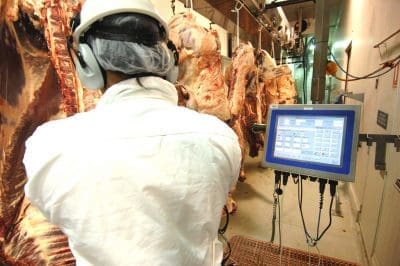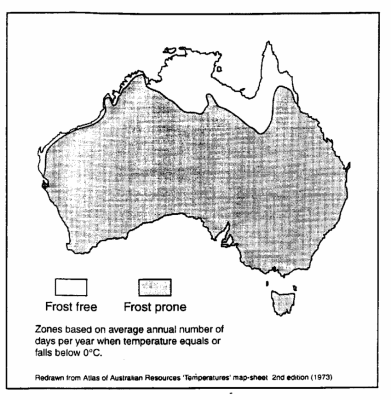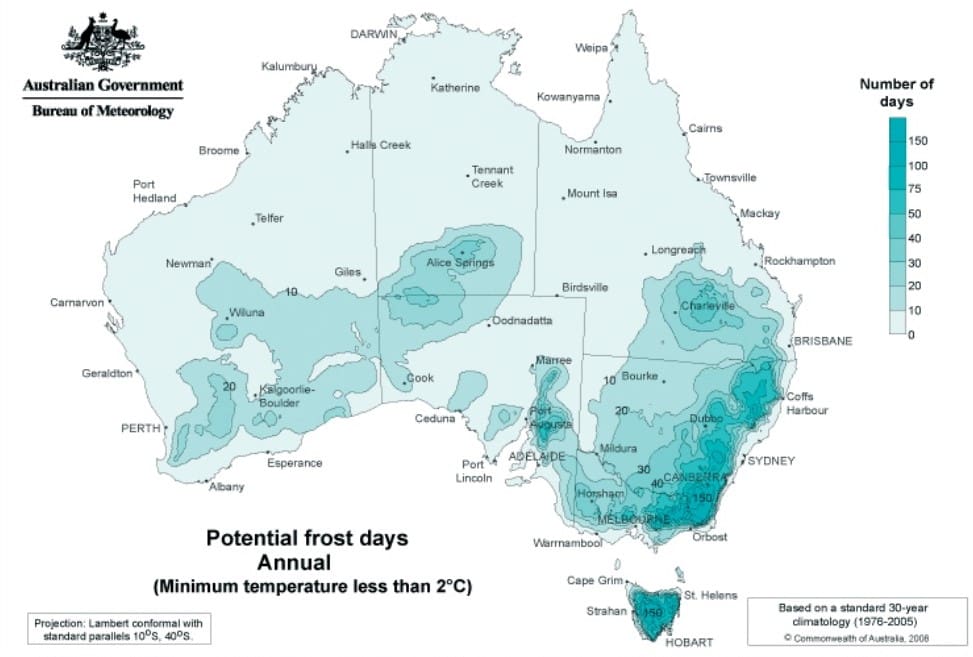THE onset of the first full blast of winter and the presence of jack frost this week has pushed more slaughter-ready cattle to market, especially in more northerly regions.
Some Queensland processor grids have fallen 20c/kg over the past week as a result, while others that had already lowered offers earlier, remained unchanged this morning, compared with last Tuesday’s report.
 Still other large export processors in Queensland have no offers on the table this morning, content that they have kill spaces well covered now until well into July or early August.
Still other large export processors in Queensland have no offers on the table this morning, content that they have kill spaces well covered now until well into July or early August.
Best offers seen this morning from competitive southern Queensland processors have grass heavy steer four teeth, with an HGP, at 495-510c/kg, while heavy cows are at 420-440c/kg. One company at the upper end of that range is currently considering its position, Beef Central was told.
As a comparison, those same processors a month ago were quoting 460c on heavy cows, and 520-530c on four tooth ox. This time last year, before the heavy turnoff period started, the corresponding quotes were 440-445c on heavy cows and steers 525c.
Part of the reason for current wider disparity from one plant to another is some quotes on big runs of western and northern cattle won and lost over the past week, Beef Central was told. One line quoted on last week was for 16 decks of heavy steers, and others are understood to have been considerably larger than that.
One large multi-site, multi-state processor Queensland livestock manager said his company was “getting as lot of cattle poked at it” this week, pushing its grid offers lower.
Central Queensland sheds are typically 10-20c behind the rates quoted above. Some Central Qld sheds are now booked solid through to week commencing 8 August – the longest backlog seen so far this year, with July fully accounted for.
Saleyards prices (see summary below of sales held since Monday) have also come under pressure, but in Queensland the presence of a flock of southern meat processor buyers continues to add to competition, keeping local prices around 400c/kg equivalent for good cows. Buyers from Hardwicks, Midfield, AMG, Ralphs and others were making their presence felt at Dalby sale last Wednesday, suggesting there aren’t enough cattle at home to keep chains moving.
Direct consignment prices in southern states have not come under the same supply pressure, and in fact some multi-state processors are diverting grainfed kills out of Queensland sheds to plants further south, to a) supplement local kills, and b) take pressure off northern sheds that are now filling up with grass cattle.
Frost impact on pastures
Heavy frosts and season-low overnight temperatures have been reported across large parts of eastern and southern Australia in recent days. The gauge showed minus 2 at Warwick sale early this morning.
So how much of Australia’s cattle grazing region is frost-prone?
The BOM map below (click on image for a larger view) shows potential frost days per year across the continent. What it doesn’t show is that even in the area shaded lightest (illustrating 0-10 days annual frost) about 80pc of the land area can still receive a few frosts each year (see second, older map) – certainly enough to damage pasture condition and quality. What’s perhaps most surprising is just how little of Australia is in fact frost-free.

On the meat sales side, a modest recovery is being seen in export trimmings prices this month, enhanced by the fact that New Zealand’s annual dairy cow kill has now run its course. The domestic market remains tough enough, especially for loin cuts, but that’s not unusual for this time of year with barbecues parked in the garage or garden shed for winter.
Some processors are recording a small improvement in the revenue complex, fundamentally due to stronger manufacturing meat prices on grass product. Numbers remain much tight on grainfed.
Weekly slaughter eases, due to holidays
Last week’s national seven-day beef kill reported by NLRS showed a sharp drop, losing 10,500 head on the week before to 129,469 head. Most of that can be explained by the Monday public holidays observed in all states bar Queensland last week.
In contrast, Queensland’s adult cattle kill was virtually unchanged at 73,378 head, with all other states dropping significantly.
Saleyards trend softer
With the exception of Gunnedah (no sale held the previous week due to yards renovations), saleyards numbers trended down early this week, in the run through to end of financial year.
Wodonga sale this morning saw a yarding of 1052, down 560 on last week. Young cattle and bullocks experience little change in price however cows lost 20c/kg from the high level the previous week. Bullocks averaged 321c/kg. Medium weight 2 score cows averaged 194c and sold 216c/kg. Heavy weight 3 score cows averaged 236c and the best of the heavy cows made to 260c to average 253c/kg.
Wagga sale yesterday yarded 4640, up a little due to no sale last week. Bullocks made to 338c and averaged 322c/kg, while manufacturing types averaged from 204-209c with sales to 230c/kg. Medium weight score 2 cows to processors averaged 183c and sold to 205c/kg, while heavyweight 3 score cows made to 235c with most sales at 224c/kg. The best of the good heavy weight cows made to a top of 263c with a large number averaging 250c/kg.
After a closure the previous week due to yards renovations, Gunnedah lifted numbers by 1900 to 2900 this morning. Most categories trended cheaper with buyers operating cautiously due to short weeks and various works having extra cattle on hand. Grown heifers to process slipped 25c/kg to range from 230-276c/kg. Cows lost much of their momentum from last week’s solid gains, with medium and heavy weights 30-40c/kg less in places with heavy drafts selling 185c to 219c/kg.
There was a substantial fall in numbers offered at Roma store sale this morning, where 5965 head were yarded, down more than 2200 on last week. An interim report (see full report tomorrow) saw grown steers 500-600kg make from 230-284c/kg, with heavier weights over 600kg to 282c.


If CQ processors are with no drought on, booked out for five to six weeks already in a normal year, where are the cattle from that 36 000 head feedlot at Gogango going to get processed?